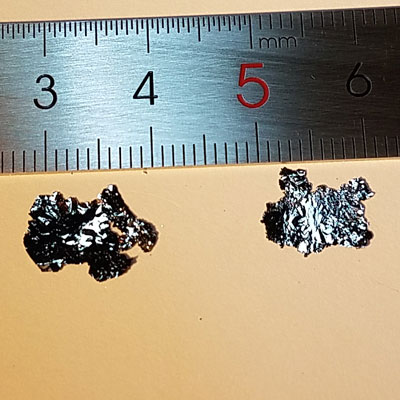Description
Re-Doped WSe₂ Crystals (Rhenium-Doped Tungsten Diselenide)
Re-doped WSe₂ is a layered transition metal dichalcogenide (TMDC) with a van der Waals structure, combining the intrinsic properties of WSe₂ with enhanced electronic and catalytic functionality introduced by rhenium doping. Rhenium doping provides additional charge carriers, modifies the band structure, and enhances the material’s electronic, optical, and catalytic properties, making it highly valuable for advanced research and applications in optoelectronics, spintronics, and energy conversion technologies.
Sample Size Options:
Crystals larger than 10 mm²
Crystals larger than 25 mm²
Crystals larger than 100 mm²
Material Properties:
Layered Van der Waals Structure: Facilitates exfoliation into thin layers for 2D material studies.
Electronic Tuning: Rhenium doping introduces n-type conductivity and modifies the band structure for tailored applications.
High Optical Absorption: Strong absorption in the visible-to-infrared range.
Enhanced Catalytic Activity: Rhenium doping improves performance in hydrogen evolution reactions (HER) and other catalytic applications.
Crystal Structure:
Type: Hexagonal layered structure
Features: Cleavable layers, ideal for thin-film fabrication and nanoscale research.
Degree of Exfoliation:
Ease of Use: Readily exfoliates into monolayers or few-layer sheets for advanced research and device integration.
Other Characteristics:
Optoelectronic Performance: Enhanced photoluminescence and charge carrier dynamics for advanced devices.
Spintronic Potential: Rhenium doping enables exploration of spin-orbit coupling effects and spintronic applications.
Energy Applications: High catalytic efficiency for HER and other energy-related processes.
Applications:
Optoelectronics:
Ideal for photodetectors, light-emitting diodes, and photovoltaic devices.
Quantum Materials Research:
Enables studies of doping-induced changes in quantum transport and electronic properties.
2D Material Studies:
Suitable for integration into van der Waals heterostructures and nanoscale devices.
Energy Applications:
Promising for catalytic processes, including hydrogen evolution reactions (HER).
Spintronics:
Suitable for spin-based devices and studying spin-orbit coupling in doped TMDCs.
Additional information
| CAS Number | N/A |
|---|

